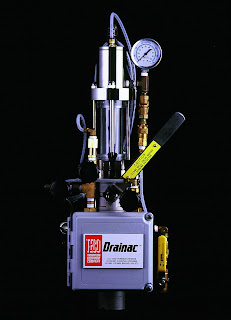A customer of mine recently showed me a competitor’s consistency transmitter that had been installed in one of his pulp lines. The blade of that transmitter had been snapped clean off and the attachment point was bent about 30 degrees from its normal position.
“Look at that”, he said. “That’s what I’m talking about when I say I need a more durable sensor. That’s the third transmitter I’ve had to replace in the last four months and I gotta tell you, I’m getting damn tired of it. What can you do for me?”.
---
Well, the short answer to that is “it depends”. It depends on the details of the application because our transmitters, just like everybody elses' transmitters, are designed for a specific range of process conditions. As long as you’re within the acceptable application window for an instrument, you’re going to get a dependable and durable measurement. If, however, you stray outside of that range, you’re likely going to get a noisy or bad measurement, or, in extreme cases, a destroyed instrument.
I asked my customer what the conditions were in his line. He told me that he was running about 4% at 4,000 gpm in a 14” line. Well, that works out to a stock velocity of about 8.337 fps. Put another way, that’s about 5.6 mph. While that doesn’t sound very fast, when it comes to instrumentation in a line, 5.6 mph is screamingfast.
It doesn’t take much in the way of a de-watered stock slug to wreak a lot of damage at that rate. The reality is I think just about anybody’s transmitter would have been destroyed under those conditions, mine included.
High stock velocities are bad for other reasons, too. Apart from damage, higher stock velocities can make a transmitter indicate a change in consistency that really isn’t there.
Mechanical sensors respond to various conditions in the line, of which a change in consistency is only one. In addition to consistency, transmitter readings are typically a function of flow rate and furnish type, among other parameters. This means that the reading you’re getting isn’t just giving you information about consistency, but other things as well.
Blade style sensors, in particular, are sensitive to changes in stock velocity. At high enough speeds, those variations in velocity will look just like shifts in consistency, and woe unto your control loop when that happens. Your dilution control will try to accommodate for non-existent changes in consistency, and then, the non-existent changes become very real. The next thing you know, your stock has become really light, or really heavy, all the while there doesn’t seem to be any change on the consistency reading at all. And if you get really, really heavy, you might lose another transmitter.
You can compensate for higher flow rates – to a point, that is - provided your transmitter accepts a flow input (ours do). You use the flow information to calculate both the the current velocity and also a correction to the consistency measurement. Our transmitters are pretty unique in this regard as we are the only manufacturer to incorporate this as a standard feature in our line.
There is a limit to flow compensation, of course. At very high flow rates, the flow component of the measurement becomes so large that the consistency component is swallowed up in the noise. Under those conditions, what you really have is a flow indicator and not a consistency transmitter.
The best solution for all of this, of course, is to slow the stock velocity down. Slower stock velocities will impart less “velocity noise” that you have to compensate for. In some cases, you can eliminate the flow induced component altogether. Secondly, slower velocities will also decrease the likelihood of sensor damage.
There are basically only two ways to reduce stock velocity. You either slow your production rate down, or you increase the size of the line where you want to make a consistency measurement. Most mills are in the business of making pulp and paper, so reductions in production rates are usually not an option. This leaves increasing the line size as the best way to slow the stock velocity down.
So how much do you want to slow your velocity down? Well, that depends on the transmitter you want to install. If you’re looking at TECO’s C3000 or C5000 series sensor, you’ll only need to slow your velocity down to about 2.5 fps or so. At that rate, the C3000 & C5000 sensor become immune to changes in flow velocity. In other words, the flow-velocity-induced component of the measurement drops off to zero at rates of 2.5 fps or less. This value is somewhat variable and dependent on the furnish you’re working with. For shorter fiber stocks, for example, you could exceed 3.0 fps and not worry too much about velocity noise.
What if you can’t get your velocities below 2.5 fps? The C3000 & C5000 series sensors are fully compensatable for line velocities up to about 6 fps. Our C6000 transmitter, don’t forget, accepts a flow input to make this adjustment automatically.
That said, you’ll get the best results when you keep your velocities below 2.5 fps.
So what did I tell my customer?
I told him that I could provide him with a rugged and durable transmitter that would give him a reliable measurement, provided we made a few changes to his line.
